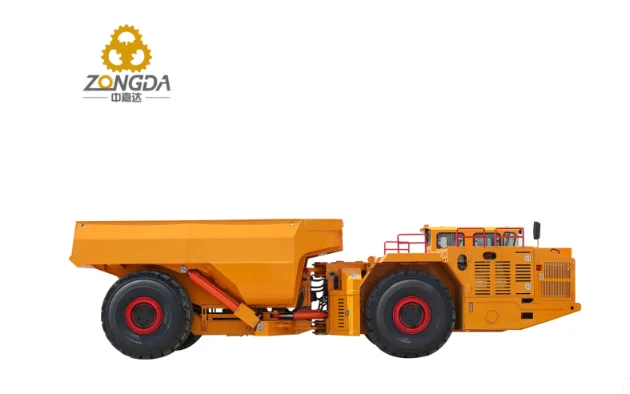
Air moves the work. In a tight heading, heat, gases, and dust can stack up fast and your fleet feels it first. Engines run hotter. Filters clog sooner. Sensors misread. When airflow dips, production slips. This piece breaks down how air quality touches every part of your gear’s life cycle and what you can do about it, with practical checks you can apply shift by shift.
What Fails First When Airflow Falls Short?
Poor air hits three fronts at once: temperature, exhaust dilution, and dust. If any one of those creeps up, your equipment pays. Before diving into components, set a baseline for your headings and crosscuts. Track ambient temperature, CO/NOx, and particulate count over the shift, not just at the start. Trends tell you more than one-off readings.
Heat Load on Powertrain
High inlet temps cut engine air density, so combustion quality drops and power derates. Cooling packs work harder, fans draw more power, and belts wear early. Even a 5 °C rise in ambient can push coolant margins into the red on long tramming runs.
Exhaust and DPM Accumulation
When dilution air is low, diesel particulate matter builds in ducts and silencers. Backpressure rises, turbo spools later, and throttle response feels “lazy.” You change filters more often, yet still chase smoke complaints underground.
Dust, Moisture, and Electronics
Dust plus humidity cakes on fins and boards. Sensor drift shows up as false alarms or hard-to-trace limp modes. The fix is not only new sensors. It starts with cleaner air around them.
How Does Poor Ventilation Cut Into Output And Cost?
You feel it in the numbers first. Fuel use goes up while tons moved per hour slide. That sounds small on paper, but a few percent gap every shift adds up over a quarter.
Productivity Slippage
Longer cool-down idles, slower ramp-ups on grades, and frequent “temperature holds” cut cycle count. That means fewer buckets by end of shift.
Maintenance Frequency And Part Life
Air filters, DPF units, belts, fan clutches, and hydraulic oil all age faster under heat and dust. A common rule of thumb: every 10 °C increase in oil temperature can roughly halve oil life. You do not want to test that rule the hard way.
Unplanned Downtime
Random derates become planned stops, then full breakdowns. Most “mystery” no-starts after lunch break trace back to heat soak and airflow gaps in the previous runs.
Where Should You Measure First To Catch Problems Early?
Pick the spots your crew actually passes. Fancy dashboards mean little if no one sees them between faces.
Practical Monitoring Points
- Ambient at operator height at the face and in return air
- Intake air temp at engine airbox
- Differential pressure across primary air filter
- Coolant and hydraulic oil temps at working load
- CO/NOx and DPM near tramming routes
Simple Thresholds That Work
Set two-step alarms: caution and action. Caution prompts cooling idles or route changes. Action pauses the cycle and calls for extra airflow. Keep it simple so crews use it.
Can Ventilation Settings Be Tuned Around Your Fleet Mix?
Yes. Air quantity should match the fleet you actually run, not the fleet on paper. If your shift now relies on smaller, tighter-turn loaders, you can stage air differently than last year’s plan.
Matching Air to Duty Cycles
Peak air should align with tramming bursts and mucking windows, not just “all day.” If headings are short and cycles are quick, you gain more by timing air boosts to those windows.
Routing and Doors
Leaky doors waste a lot of fan work. One hour on door seals can repay in cooler intakes for the rest of the week. Small fix, real payoff.
How Do Heat And Ventilation Interact With Cooling Systems?
Engine and hydraulic cooling do not live in a vacuum. They rely on the same air your people breathe.
Cooling Pack Realities
If fins are dusty, fan speed increases but heat still stays. That steals power from tramming. Clean packs plus steady air save more than a bigger fan ever will.
Oil and Coolant Margins
Watch temps under load, not just at idle. If coolant rises fast after each bucket, you have an airflow and duty-cycle mismatch, not only a radiator issue.
What Role Do Equipment Choices Play In Air Demand?
Fleet sizing is not only about bucket counts. In tight headings, compact gear can reduce the ventilation burden and shorten exposure windows.
When A Compact Loader Helps
A smaller engine and shorter cycle path can mean less heat dumped into a heading and quicker clears between passes. For confined stopes, that is a real relief valve for air planners.
Product Tie-In For Narrow Veins
If you plan for narrow drives, a compact unit with a 0.6 m³ bucket and 1.2-ton tramming capacity is often enough to keep the face moving while keeping temps and fumes manageable; the ZDL201 Underground Loader fits this profile well.

How Can You Improve Airflow Without Rebuilding The Mine?
You do not always need a capital project. Small, steady wins stack up.
Fast Wins You Can Do This Week
- Seal duct joints and repair door hardware
- Add point-of-use airflow near active faces
- Clean cooling packs at set intervals tied to dust loads
- Re-sequence mucking so two engines do not peak at once in one heading
- Provide operators with quick visual air cues, not just numbers
Longer-Horizon Steps
Review intake routes for sharp turns that stall flow. Consider variable air strategies that boost flow only when cycles peak. Upgrade sensor coverage where crews linger.
What Does Good Look Like In Daily Operations?
The target is steady temps, clean readings, and quiet cycles. When air is right, your crew notices… mostly because they stop noticing heat alarms.
Snapshot of A Healthy Heading
- Ambient below 30 °C at face during mucking
- Stable intake temp rise under 10 °C at engine
- Air filter delta-P within spec mid-shift
- Few to no derates during climbs
- Clear line of sight, minimal haze after cycles
How Do You Tie Air Quality To Training And Behavior?
Even great plans fail if habits lag. Small behavior shifts protect machines more than any single upgrade.
Operator Habits That Save Gear
- Avoid idle stacking at the same crosscut
- Stagger entries so fresh air reaches the face first
- Call out hot zones early; do not “push one more bucket” into a warning state
Why Does This Matter For Your Bottom Line?
Better air equals longer machine life, fewer filter changes, fewer derates, and more steady tons. Most sites do not need perfect labs. They need clean, repeatable practices and gear that fits the space.
Closing Thought
Air is not free underground. Treat it like a consumable that pays back across fuel, parts, and uptime. Small fixes, done often, beat big fixes done late.
Do You Have The Right Signals In Place?
Before tweaking fans, make sure your team sees the right signals in the right places. You want simple prompts tied to actions, not pages of charts.
Place Sensors Where Work Happens
Put monitors at faces, loading bays, and along haul routes. If the screen is not on the path, it may as well be off.
Tie Alerts to Playbooks
For underground ventilation, ‘Caution’ means ‘cool and clear.’ ‘Action’ means ‘pause the cycle and call for air.’ Clear, short, repeatable.
Can Airflow Planning Lift Underground Mining Machinery Performance?
Yes, and you can measure the lift. Line up airflow with duty cycles, then watch fuel per ton and cycle counts for the next two weeks.
Match Air to Real Use
If your loader runs three short bursts each cycle, bump air before each burst rather than running high all day. The gain in underground mining machinery performance becomes clear, and the data will show the difference within hours.
What Improves Underground Loader Air Quality Around The Face?
Fresh air to the face, clean routes back. Simple plan, real gains.
Face-Focused Actions
Use tight duct seals, position auxiliary fans to sweep the operator zone, and keep return paths clear of parked units. Little things, but they add up.These tweaks lift underground loader air quality at the face without heavy rebuilds.
Will A Compact Loader Help In Confined Drives?
Often, yes. In narrow veins, big engines dump too much heat and exhaust for the air you can push through.
Where A Smaller Unit Fits
Short throw, fast turns, lighter heat load. If your heading struggles with haze after each pass, test a smaller unit on one panel for two weeks and compare deltas: temp, DPM readings, filter life.
FAQ
Q1: What readings matter most when checking air quality for equipment health?
A: Ambient temperature at the face, intake air temperature at the engine, filter differential pressure, and CO/NOx near haul routes. Track trends across the shift.
Q2: How fast can poor airflow affect engine performance?
A: Effects can show within one cycle on steep grades, especially after lunch when heat soak peaks. Watch for sluggish throttle and higher coolant temps.
Q3: What is a simple weekly task that pays back fast?
A: Clean cooling packs and check door seals. Those two steps often recover several degrees of inlet temperature and cut fan load.
Q4: Do smaller loaders always reduce ventilation needs?
A: Not always, but in tight headings they often help by lowering heat and shortening exposure windows. Test on one panel and compare.
Q5: How many links should a best-practice article include for readers?
A: Keep it light. Four links spread across the page work well for clarity without distraction.
About ZONGDA
QINGDAO ZONGDA MACHINERY CO., LTD focuses on underground metal ore loading and haulage, not coal applications. The portfolio covers compact underground loaders tailored for narrow veins and confined drives where airflow and heat margins are tight. Designs target stable cooling, service access, and reliable tramming in hard-rock environments. Engineering centers on practical gains: shorter cycles, cleaner intake paths, and cooling packages that hold their margins under repeat load. If you need a field-proven loader for headings where air is at a premium, ZONGDA is a solid name to start with. For product details, visit the company site pages, review specs, then speak with technical staff about your headings and duty cycles.



